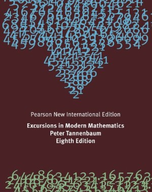Solution Found!
Solved: Exercises 53 through 56 refer to a landmark study conducted in 1896 in Denmark
Chapter 14, Problem 55(choose chapter or problem)
Exercises 53 through 56 refer to a landmark study conducted in 1896 in Denmark by Dr. Johannes Fibiger, who went on to receive the Nobel Prize in Medicine in 1926. The purpose of the study was to determine the effectiveness of a new serum for treating diphtheria, a common and often deadly respiratory disease in those days. Fibiger conducted his study over a one-year period (May 1896 April 1897) in one particular Copenhagen hospital. New diphtheria patients admitted to the hospital received different treatments based on the day of admission. In one set of days (call them even days for convenience), the patients were treated with the new serum daily and received the standard treatment. Patients admitted on alternate days (the odd days) received just the standard treatment. Over the one-year period of the study, eight of the 239 patients admitted on the even days and treated with the serum died, whereas 30 of the 245 patients admitted on the odd days died.(a) Describe the control and treatment groups in Fibigersstudy. (b) What conclusions would you draw from Fibigersstudy? Explain.
Questions & Answers
QUESTION:
Exercises 53 through 56 refer to a landmark study conducted in 1896 in Denmark by Dr. Johannes Fibiger, who went on to receive the Nobel Prize in Medicine in 1926. The purpose of the study was to determine the effectiveness of a new serum for treating diphtheria, a common and often deadly respiratory disease in those days. Fibiger conducted his study over a one-year period (May 1896 April 1897) in one particular Copenhagen hospital. New diphtheria patients admitted to the hospital received different treatments based on the day of admission. In one set of days (call them even days for convenience), the patients were treated with the new serum daily and received the standard treatment. Patients admitted on alternate days (the odd days) received just the standard treatment. Over the one-year period of the study, eight of the 239 patients admitted on the even days and treated with the serum died, whereas 30 of the 245 patients admitted on the odd days died.(a) Describe the control and treatment groups in Fibigersstudy. (b) What conclusions would you draw from Fibigersstudy? Explain.
ANSWER:Step 1 of 3
(a) In a controlled study, the subjects are divided into a treatment troup and a control group. The control group does notrective the actual treatment the treatment group does receive the treatment which researchers are testing.
